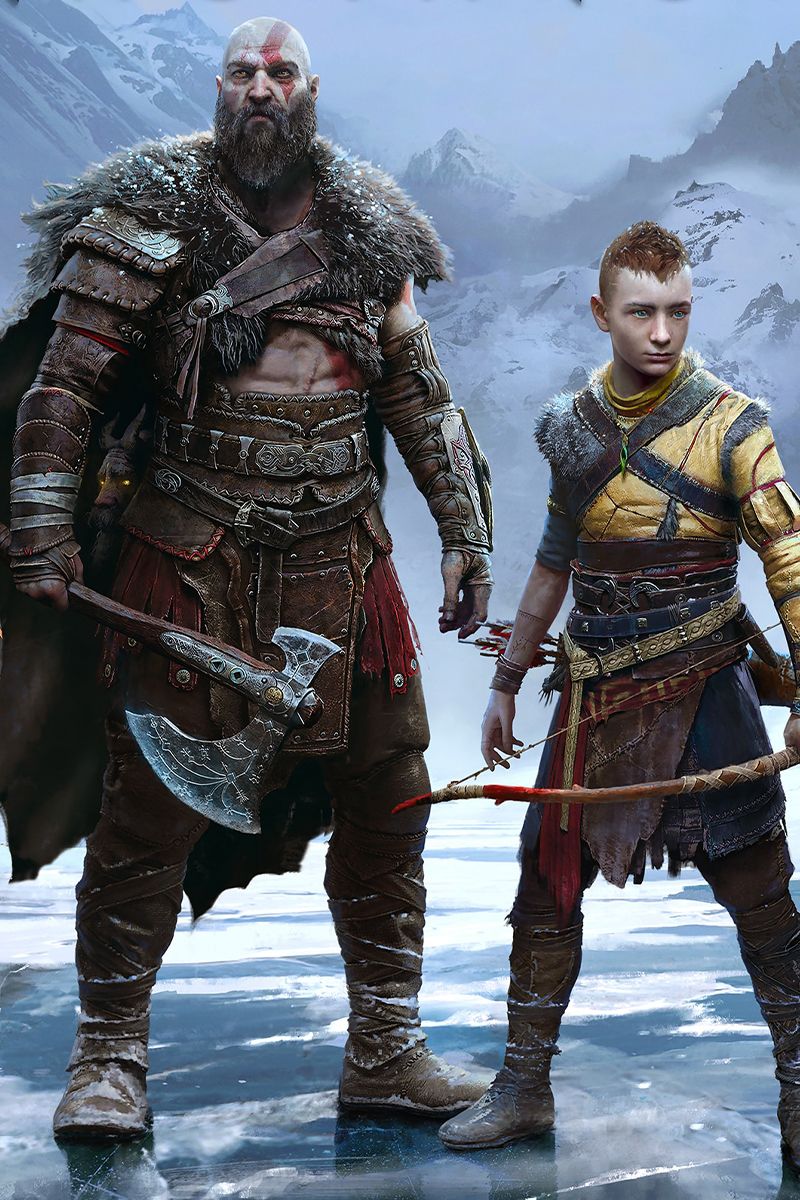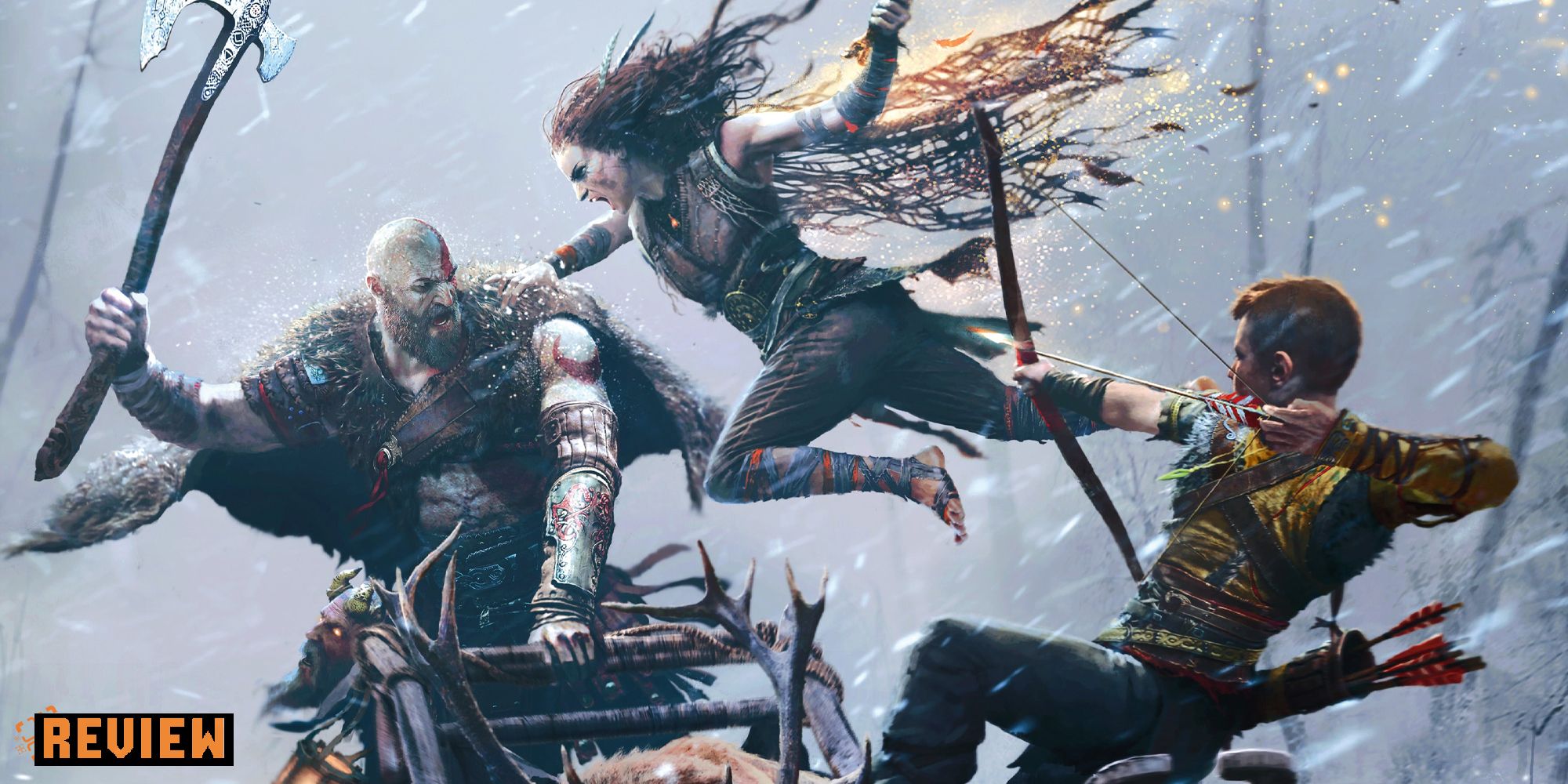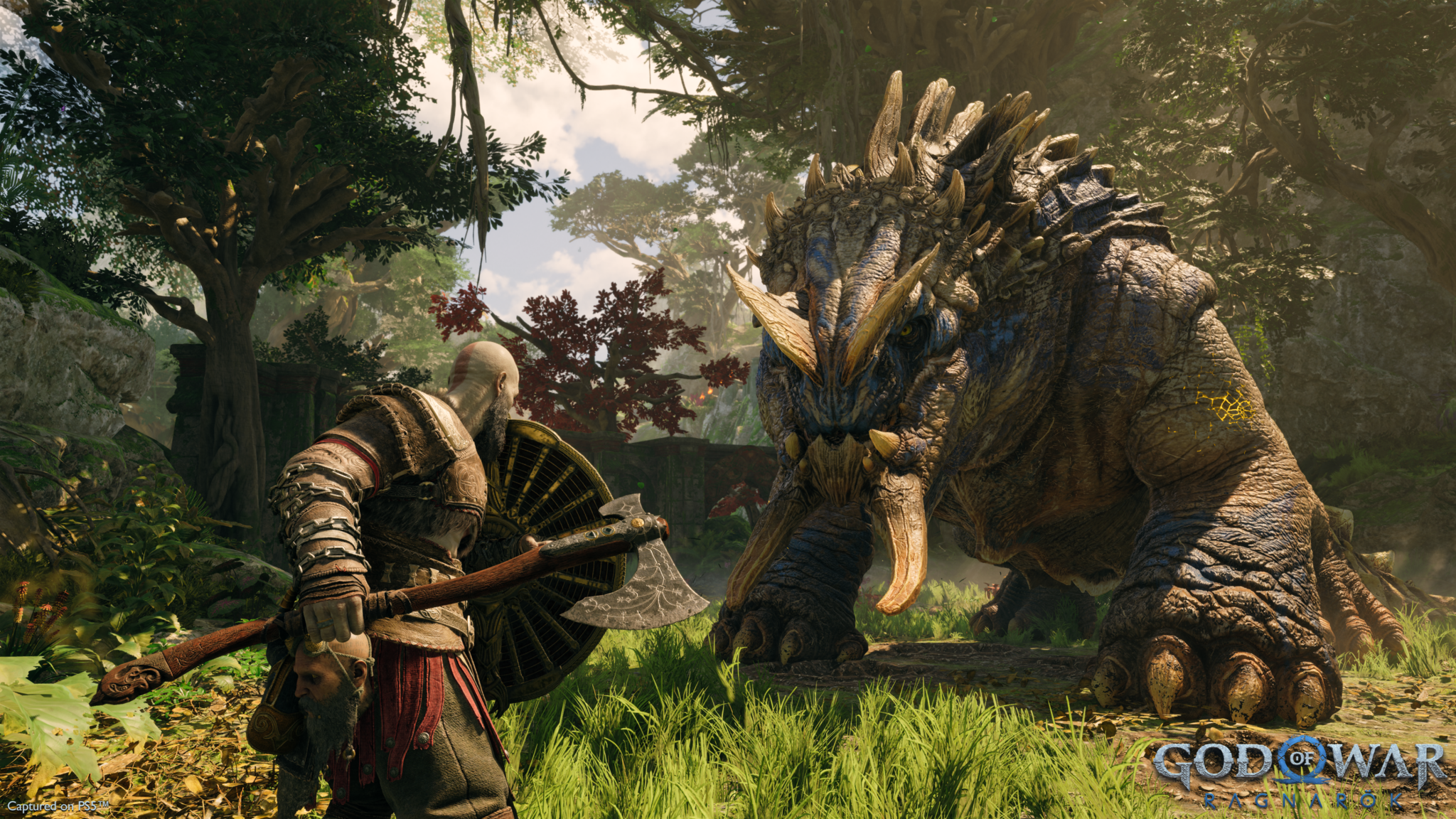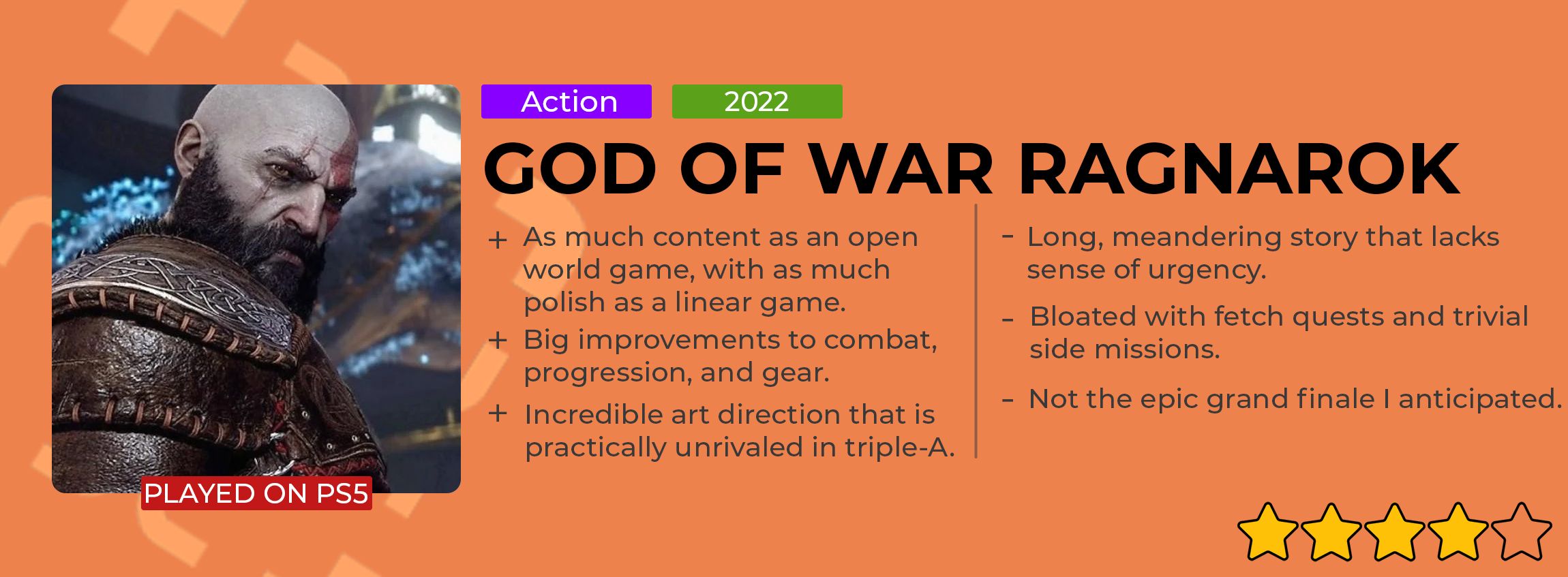Writing a spoiler-free review of God of War Ragnarok is difficult, but not for the reasons you might think. I wish I could say I have to be careful not to ruin the story, which is filled with so many twists and unexpected turns that revealing those details would ruin the experience, but that’s not really the case. The big surprises in God of War Ragnarok, the things I can’t talk about directly, are all related to the gameplay. Revealing what happens to Character A at a pivotal moment would actually be far less spoilery than explaining what you’re doing with the controller when it happens. Ragnarok is much bigger and offers a lot more variety than its predecessor, but at the cost of telling a cohesive and well-paced story. That will be a fine trade-off for many, but the strength of 2018’s God of War’s narrative and the stakes it established gave me higher expectations for the sequel than Ragnarok could deliver.
God of War (2018) ends with a huge revelation, one that recontextualizes Kratos and Atreus’ entire journey. When the pair finally reach Jotunheim to lay Faye’s ashes to rest, they discover that she was secretly one of the last giants, and that Atreus is actually Loki, a Jotunn champion prophesied to lead an army against Asgard and defeat Odin in Ragnarok, while Kratos is destined to die defending his son - though Atreus doesn’t know it. The prophecy is already in motion now that Baldur is dead, and when we catch up with them at the start of God of War Ragnarok, the three-year winter that precedes Ragnarok has already devastated Midgard, turning it into an icy, inhospitable wasteland.
Now in his late teens, Atreus’s Jotunn magic is starting to develop and he’s eager to learn more about the history of his people and who he really is. He feels himself being pulled between two identities: Loki the Champion, and Atreus, son of Kratos. Though Kratos only wishes to protect his son and prevent him from following the same path he did - the path of war - he reluctantly agrees to follow Atreus on his journey to find out who he is.
That journey - and all of the detours along the way - takes Kratos and Atreus on a sprawling tour across the nine realms, to both new and familiar locations, for both important and sometimes confusing reasons. Each realm has its own unique visual identity just as they did before - from the seaside dwarven cities of Svartalfheim to the lava-spewing molten core of Muspelheim - but now they’re even more sprawling and detailed. The undoubtedly massive budget was well spent on the art direction of these environments, which is often breathtaking. I felt guilty if I didn’t take time to stop and spin the camera around in every new area just to appreciate all the work that went into crafting these places and making them feel real. Only Uncharted 4 can rival the spectacle of Ragnarok’s stunning vistas and action set pieces, and if it ever comes to PC with ultrawide support, I’ll gladly spend a few dozen more hours on it just to see it all again.
I can’t over-emphasize just how much there is to see too. While 2018’s God of War had effectively one main exploration hub in Midgard with several linear realms/optional arenas, God of War Ragnarok features an open-zone area full of side quests in practically every realm. Once you make your way through the linear story section of each realm, you’re given the opportunity to stick around awhile and explore. Like the Lake of Nines, these optional areas are so vast they require a boat or some other vehicle to explore and can take anywhere from two to six hours to fully clear, provided you’ve unlocked the necessary abilities and upgrades to even access everything. Towards the end of the game there’s a sidequest that takes you into an optional area that is as big as the entirety of any of the other realms, yet it's possible to finish the story without ever seeing it. I’ve seen some sources estimate that it takes 70 hours to 100 percent complete Ragnarok but that seems low to me. I’m 60 hours in and only three-quarters of the way done.
Ragnarok has an open-world amount of content with a linear game’s level of polish, which is an astounding accomplishment, but it verges on triple-A bloat. For every quest that leads to emotionally resonant moments and catharsis for beloved characters, there’s five lonely spirits with unfinished business that need you to find their lost tube sock for them. It’s hard to feel engaged with every little story when so many of the places feel like they were built with only gameplay and time consumption purposes in mind and a writer had to come in afterward to figure out a narrative reason for why you’re supposed to be there.
This is perfectly understandable for side missions, but the main storyline has the same quality. It’s as though the developers decided on all the places you’d go and what you’d do there, then reverse-engineered a narrative that loosely connected all the events. The looming threat of Ragnarok doesn’t have nearly as much weight on our heroes’ actions as you might expect, and thanks to the sheer size of the game - and constant reminders from your companions that you can slow down and explore if you feel like it - you’re never given any real sense of urgency. Individual chapters feel episodic and disconnected from one another as Kratos floats from one event to the next, reacting to each situation while largely playing the passenger in his own story. There are no big reveals that tie it all together this time, and while it is not without its tender moments and well-explored themes, there is far too much meandering toward a simple, straightforward conclusion.
From a gameplay perspective, I got more than I anticipated from Ragnarok. It manages to introduce new systems and gameplay mechanics consistently from beginning to end, keeping combat and exploration fresh and exciting the entire time - you can check out the most in-depth analysis of the combat here, in my preview, and in this non-exhaustive deep dive. Gear has similar progression problems that 2018’s God of War had, but now you can actually craft complex builds with cool synergies that feel impactful. There’s an unbelievable amount of variety in the places you go and the kinds of enemies you fight compared to the previous game, and your options in combat are a lot more involved and meaningful as well. These improvements and refinements make Ragnarok a great sequel, and the increased length will please the ‘time spent = value’ crowd, but the path from Faye’s final resting place to the final battle of Ragnarok is not nearly as composed or worthwhile as it could have been.
Score: 4/5. A PS5 code was provided for this review.

God of War: Ragnarok
Following on from 2018's quasi-reboot, God of War Ragnarok continues the journey of Kratos and his son Atreus. This time, they must go up against the pantheon of Norse gods, culminating in a showdown for the ages.



